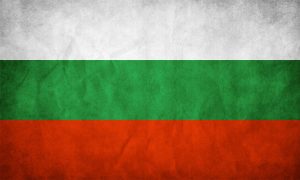
24 interesting facts about Congo (Kinshasa)
- 👁️ 2243
Congo (Kinshasa), officially known as the Democratic Republic of the Congo (DRC), is a country with profound historical significance and unparalleled natural beauty. It is the second-largest country in Africa by area and is home to a vast array of cultures, languages, and ecosystems. From the dense rainforests of the Congo Basin, which house an incredible diversity of flora and fauna, to the mighty Congo River, the country’s landscape is both varied and breathtaking. Despite facing significant challenges, including political instability and conservation issues, the DRC remains a land of great potential and resilience. Here are 24 interesting and informative facts about Congo (Kinshasa) that highlight its complexity, richness, and the indomitable spirit of its people.
- The Democratic Republic of the Congo was formerly known as Zaire from 1971 to 1997.
- It is the largest country in sub-Saharan Africa and the second-largest in all of Africa, following Algeria.
- The DRC is home to the Congo Rainforest, the second-largest rainforest in the world after the Amazon.
- The Congo River is the second-longest river in Africa, after the Nile, and the deepest river in the world, with measured depths in excess of 220 meters (720 feet).
- The country has over 200 ethnic groups, with the Luba, Kongo, and Mongo peoples being some of the largest.
- Kinshasa, the capital and largest city, is one of the largest cities in Africa and is located on the Congo River directly opposite Brazzaville, the capital of the neighboring Republic of the Congo.
- The DRC is incredibly rich in natural resources, including cobalt, copper, diamonds, and gold; it is the world’s largest producer of cobalt.
- The Virunga National Park, located in the eastern part of the country, is a UNESCO World Heritage Site and home to the critically endangered mountain gorillas.
- The country was a personal property of King Leopold II of Belgium from 1885 until 1908 when it became a Belgian colony known as the Belgian Congo.
- The DRC gained independence from Belgium on June 30, 1960.
- The official language is French, but there are over 200 African languages and dialects spoken throughout the country.
- Lake Kivu, one of Africa’s Great Lakes, lies on the border between the DRC and Rwanda and contains vast amounts of dissolved methane, which is now being extracted for energy production.
- The DRC has been plagued by conflict for decades, notably the First and Second Congo Wars, which have been among the deadliest conflicts since World War II.
- The country is part of the Albertine Rift, known for its high level of biodiversity and many endemic species.
- Despite its vast mineral wealth, the DRC remains one of the world’s poorest countries, with infrastructure and basic services lacking in many areas.
- Traditional music and dance play an important role in Congolese culture, with soukous being one of the most popular music genres originating from the DRC.
- The country’s flag features a sky-blue field, a yellow star in the upper left corner, and a diagonal red stripe with a thin yellow frame.
- The DRC is a significant contributor to the world’s supply of quinine, a medication used to treat malaria.
- The Ruwenzori Mountains, located on the border between the DRC and Uganda, are home to some of the highest peaks in Africa.
- The mining sector, particularly in the eastern part of the country, has been a source of conflict due to the vast mineral resources and control over them.
- The Okapi Wildlife Reserve, another UNESCO World Heritage Site, is dedicated to the conservation of the okapi, an animal native to the Congo and related to the giraffe.
- The DRC’s economy is heavily dependent on agriculture, with coffee and palm oil among the main crops.
- The Congolese franc is the currency of the DRC.
- The country is a member of the United Nations, African Union, Southern African Development Community (SADC), and other international organizations.
The Democratic Republic of the Congo is a country of stark contrasts, where immense natural and cultural wealth exists alongside significant social and environmental challenges. Its rich biodiversity, vast mineral resources, and diverse cultures make it a unique and valuable part of the global community. Despite the hurdles it faces, the DRC’s potential for growth and development remains high, underpinned by the resilience and spirit of its people. As the country continues to navigate its complex history and current issues, it stands as a testament to the enduring strength and beauty of the human and natural world.











